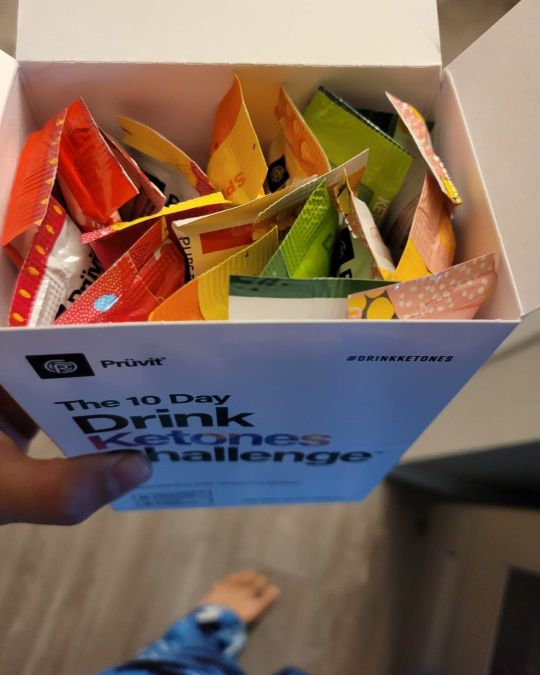#vibrationallevels
Explore tagged Tumblr posts
Photo

All I want for Christmas.. scratch that.. All I want every single day is Ketones 😍 That's it... And music. Every kind. Okay that's all. 😝 @justpruvit @ketomomsecrets #ketosis #ketoneenergy #energyflowing #flow #vibrationallevels . . . #divinefem #df #dm #energyshift #bringmeenergy #bringmeketones #ketonesforfuel #ketones #exogenousketones #ketosisislife #ketolife #metabolicflexibility #metflex #health #energy #metflexnchill #energyhealing #innerwork #extrastrengthketones #raiseyourvibration #resistencetraining #musclephd #ketobodybuilder #ketopower #ketopowerlifter (at Waite Park, Minnesota) https://www.instagram.com/p/CXeNwEUu8fH/?utm_medium=tumblr
#ketosis#ketoneenergy#energyflowing#flow#vibrationallevels#divinefem#df#dm#energyshift#bringmeenergy#bringmeketones#ketonesforfuel#ketones#exogenousketones#ketosisislife#ketolife#metabolicflexibility#metflex#health#energy#metflexnchill#energyhealing#innerwork#extrastrengthketones#raiseyourvibration#resistencetraining#musclephd#ketobodybuilder#ketopower#ketopowerlifter
0 notes
Text

It seems 'the next big thing' is emerging.
What is the most resilient parasite on Earth? An Intestinal Worm? Bacteria? A Virus? No.
A negative thought or an idea, which when planted in the mind, grows and spreads.
Guard your consciousness, perception and vibrational state, switch off the media and become immune to influence.
#consciousness#higherconsciousness#vibrationalenergy#vibrationallevel#newearth#newearthcodes#virus#monkeypox#spirituality#spiritualdevelopment#spiritualdevelopmentcoach#spiritualcoach#thirdeye#lightworker#gaia#perception#reality#creatorsofreality#quantumfield#quantumentanglement#lightbeings#12d#5d#5dconsciousness
0 notes
Text
Textile Optical Brighteners – Whitening of Textile & Clothes
Textile fibres, paper & plastics in raw state possess aesthetically undesirable brownish cast. Reason of it in natural fibres is presence of natural dyes & pigments & in manmade fibres it is attributable to thermal decomposition. Chemical bleaching can remove yellowish tint still they retain faint, creamy colour. Tinting with optical brightening agents can compensate residual yellowness. Optical brightening agents are used in paper, detergent, plastic & cosmetic industries.
Textile Optical Brightening Agent Manufacturer
A bluing agent absorbs yellow light from the sunlight and emits blue light, which combines additively with yellow light of the fabric. The resultant colour of the substrate is perceived as greywhite as the total reflectance value decreases. Sunwhite Chemicals is a manufacturer of Optical Brightening Agents for Textiles and Clothes.
Textile Optical Brightening Agents
Textile Whitener Chemical, Sunwhite Chemicals’ Optical brightening agents when present on the textile materials, exhibit fluorescence.They absorb invisible ultra–violet light and emit radiation in the visible range at blue toviolet end of the spectrum. The absorption maximum lies in between 300 to 400 nm.The wavelength of the emitted radiation lies between 400 to 440nm. They lowerreflectance in the UV region by absorbing radiation and increase the same in the visibleregion by emission. They act as supplementary emission source. At atomic level thefluorescence phenomena involve the emission of radiation from the lowest vibrationallevel of the excited singlet state S1 to any of the vibrational levels of the ground state. Athigh concentration of optical brightening agent, the fluorescent reflectance is too largefor human eye to receive a white impression. Such a sample appears to be very bright,but it has a bluish shade. In no case they can replace cleaning / scouring and bleaching.
Chemical Types of Textile Optical Brighteners
Most of the OBA compounds contain E- ethylene (-CH= CH- ) , E-azomethyne(-N=CH), or carbonyle groups . If they are combined with benzene, naphthalene, pyreneor heteroaromatic rings they can be excited with UV light. In few cases aromatic andheteroaromatic rings can also combined directly, i.e. without one of the three bridginggroups.
These can be classified into six major chemical classes. 1) Compounds with one or two stilben groups. About 80% of all the commercialproducts belong to this group. One of the examples of a compound of this groupis Tinopal RSB (C.I. Fluorescent Brightener 46). It can be used for cellulosicfibres, polyamides, detergent and paper. 2) The second group consists of 1,2 ethylene derivatives with two heteroaromaticresidues or a heteroaromatic and an aromatic residue. They are used forhydrophobic man-made fibres, particularly as additives to the melt spinning.
3) The third group consists of derivatives of coumarine. They are used forhydrophobic ibres. Some of them containing cationic groups (triazolium groups)can be applied toacrylonitrile fibres. 4) The fourth group are derivatives of 1,3- diphenyl –2- pyrazaline. They are usedfor protein fibres, cellulose acetates and polyamides. 5) The fifth group consists of naphthalimides compounds.
0 notes
Text

It seems 'the next big thing' is emerging.
What is the most resilient parasite on Earth? An Intestinal Worm? Bacteria? A Virus?
No. A negative thought or an idea, which when planted in the mind, grows and spreads.
Guard your consciousness, perception and vibrational state, switch off the media and become immune to influence.
#consciousness#higherconsciousness#vibrationalenergy#vibrationallevel#newearth#newearthcodes#virus#monkeypox#spirituality#spiritualdevelopment#spiritualdevelopmentcoach#spiritualcoach#thirdeye#lightworker#gaia#perception#reality#creatorsofreality#quantumfield#quantumentanglement#lightbeings#12d#5d#5dconsciousness
0 notes